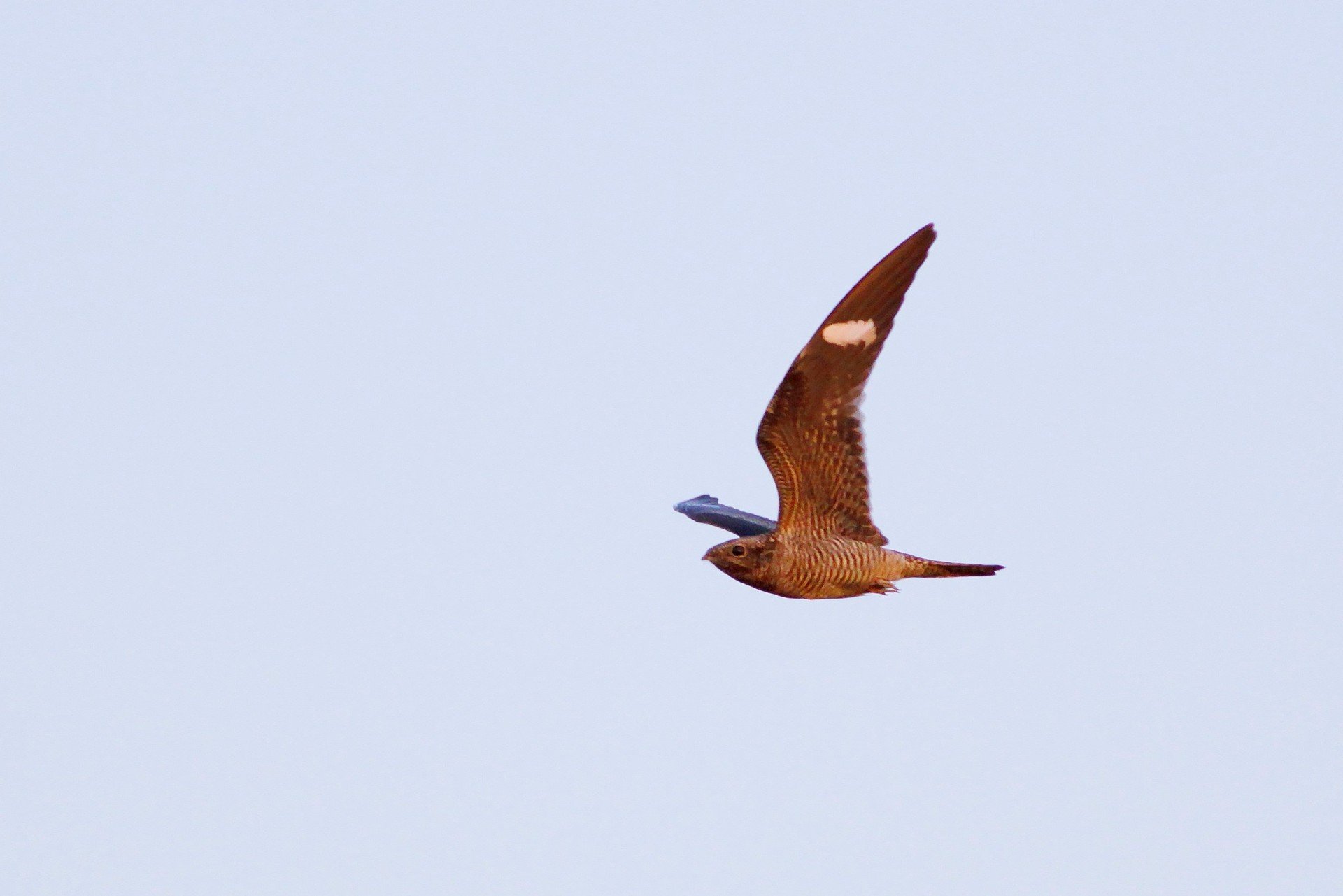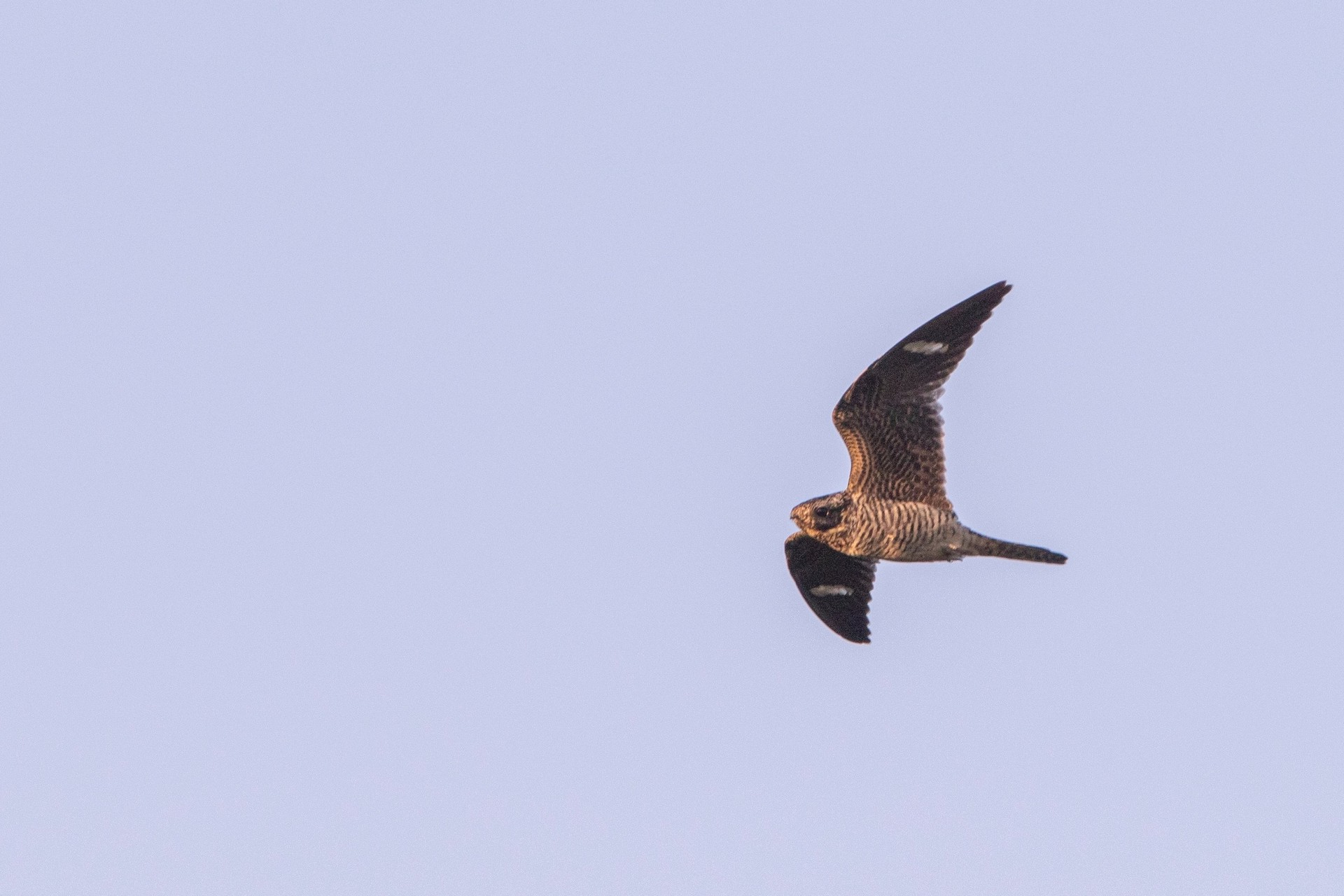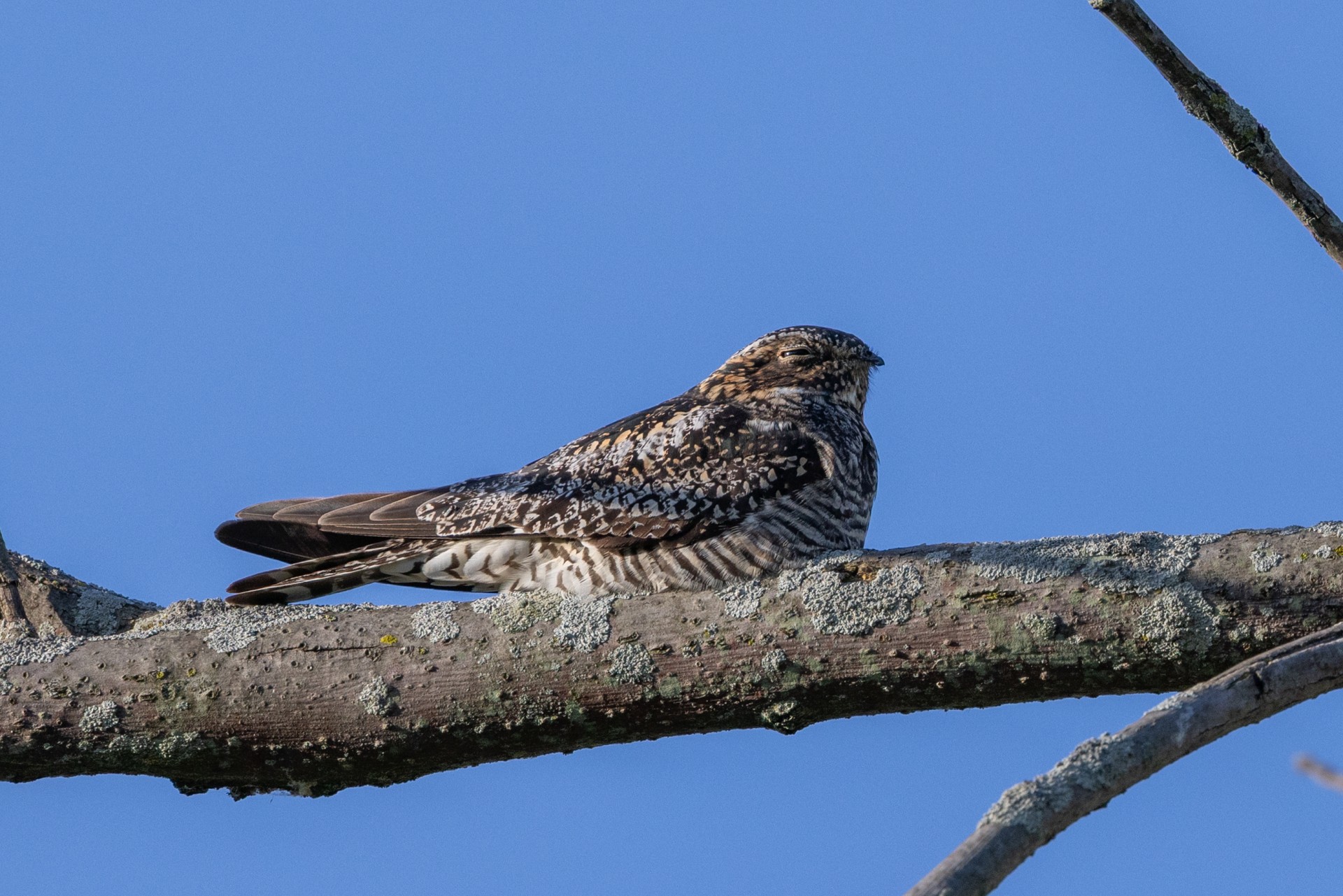Birds in Massachusetts
Common Nighthawks in Massachusetts
Despite the name, the Common Nighthawk (Chordeiles minor) is neither a hawk nor nocturnal—it belongs to the “nightjar” or “goatsucker” family, closely related to Eastern Whip-poor-wills.
As a crepuscular species, nighthawk activity peaks at dawn and dusk. Birdwatchers call them “bullbats” for both their batlike, acrobatic flight and the loud booming sound males produce during courtship dives.
How to Identify the Common Nighthawk
The Common Nighthawk’s mottled grays and browns provide excellent camouflage while resting on the ground, making them difficult to see. However, in flight, long pointed wings with white wing patches on the underside of the wing, erratic bat-like flight, and “peent” calls transform them into unmistakable aerial dancers.
Common Nighthawk Peent
Nighthawk Behavior
Mid-Flight Feeding
With their tiny beaks and cavernous mouths fringed with bristles, nighthawks catch flying insects such as beetles, moths, ants, and grasshoppers mid-flight. They glide and flare in looping, swift-like catches, often forming feeding groups over the bright lights at stadiums or marshes during dusk or dawn.
Courtship
In the early months of summer, Nighthawks can be seen—and heard—courting through the skies. Loud booming sounds resonate during the male’s courtship dives, hoping to attract the attention of a mate.
History of Breeding
Nighthawks tend to nest directly on gravelly ground, such as sand dunes, open barrens, or farmland. In the 1800s and early 1900s, they adapted to gravel rooftops in a growing urban Massachusetts, including Boston—attracted to the insects stirred up by electric lights.
Today, breeding nighthawk populations have declined in Massachusetts, following a similar trend among the nightjar family.
Nighthawk Migration in Massachusetts
By late summer—typically mid-August to September—nighthawks will begin their migration to warmer weather in South America. Hundreds of birds will gather in loose flocks to feed on the wing at sunset, swooping and peenting in a migration spectacle. Get tips for viewing Common Nighthawk migration
Threats Facing Nighthawks
Unfortunately, nighthawk populations are quickly shrinking in Massachusetts. In fact, the species’ footprint declined 70% between Mass Audubon’s Breeding Bird Atlases, 1967-2009, making them one of the most steeply declining birds in the Commonwealth. Similar trends can be seen by many other aerial-hunting insectivores.
Main threats include:
- Loss of open nesting habitat, as natural barrens (open, sparsely vegetated areas with dry, sandy, or rocky soils) and gravel rooftops are vanishing
- Insect decline due to pesticide use and habitat degradation
How Mass Audubon Supports Nighthawks
Mass Audubon works to protect and restore bird habitats—including barrens and early successional areas—in addition to avoiding pesticides on managed lands, to help give nighthawks a fighting chance. Learn more about our work protecting bird habitat
How You Can Support Nighthawks
By avoiding pesticides and supporting the protection and restoration of open habitats, you can help give these aerial insect hunters a fighting chance. Mass Audubon works to safeguard and manage the landscapes nighthawks depend on—and by becoming a member, you directly contribute to ensuring their skies remain full of their acrobatic flights for generations to come.
Upcoming Bird Programs
See MoreWinter Finch Walk with Manomet Conservation Sciences
-
Tidmarsh Wildlife Sanctuary, Plymouth
-
Thursday, January 8
9:00-10:30am
Adults
Rescue Raptors from Rodenticides
-
Online
-
Thursday, January 8
7:00-8:00pm
Adults & Families - 12 - 17
Friday Morning Birdwatching
-
Parker River National Wildlife Refuge, Newburyport
-
Friday, January 9
8:30-11:30am
Adults
Stay Connected
Don't miss a beat on all the ways you can get outdoors, celebrate nature, and get involved.





